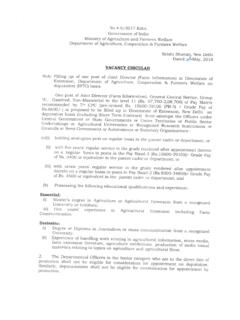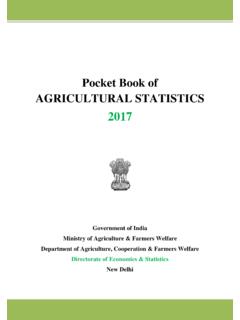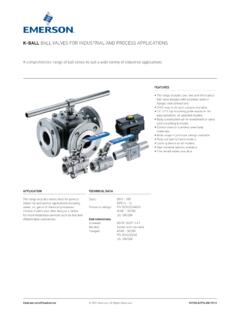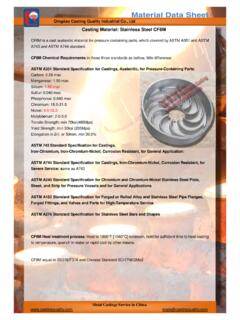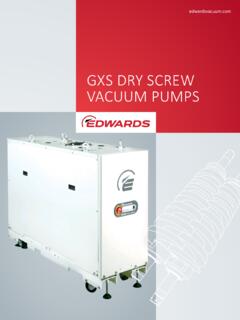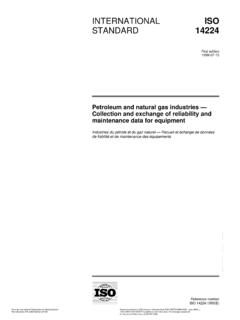Transcription of Vermicomposting 1. Introduction
1 1 Vermicomposting 1. Introduction Vermicomposting is basically a managed process of worms digesting organic matter to transform the material into a beneficial soil amendment. As per the USDA guidelines for compost practices (with effect from Oct 21, 2002), vermicomposts are defined as organic matter of plant and/or animal origin consisting mainly of finely-divided earthworm castings, produced non-thermophilically with biooxidation and stabilization of the organic material, due to interactions between aerobic microorganism and earthworms, as the materials pass through the earthworm gut. Good quality compost production in ambient temperature can be accomplished in shorter time by the process of Vermicomposting that involves use of proper species of earthworms.
2 The native cellulase activity of earthworms and microorganisms in earthworm gut promote faster decomposition of ingested organic material. The combined effect of enzymatic activity and grinding of organic materials to fineness by earthworms produces the Vermicomposting and this is not observed in compost pits without earthworm. The earthworms being voracious eaters consume the biodegradable matter and give out a part of the matter as excreta or vermi-castings. The vermi- casting containing nutrients is a rich manure for the plants. Vermicompost, apart from supplying nutrients and growth enhancing hormones to plants, improves the soil structure leading to increase in water and nutrient holding capacities of soil.
3 Fruits, flowers and vegetables and other plant products grown using vermi-compost are reported to have better keeping quality. A growing number of individuals and institutions are taking interest in the production of vermicompost utilising earthworm activity. As the operational cost of production of this compost works out to less than ` , it is quite profitable to sell the compost even at ` to ` 2. process The process of composting crop residues / agri wastes using earthworms comprise spreading the agricultural wastes and cow dung in gradually built up shallow layers. The pits are kept shallow to avoid heat built-up that could kill earthworms.
4 To enable earthworms to transform the material relatively faster a temperature of around 300C is maintained. The final product generated by this process is called vermicompost which essentially consist of the casts made by earthworms eating the raw organic materials. The process consists of constructing brick lined beds generally of to m width and to m height are constructed inside a shed open from all sides. For commercial production, the beds can be prepared with 15 m length, m width and m height spread equally below and above the ground. While the length of the beds can be made as per convenience, the width and height cannot be increased as an increased width affects the ease of operation and an increased height on conversion rate due to heat built up.
5 Cow dung and farm waste can be placed in layers to make a heap of about to m height. Earthworms are introduced in between the layers @ 350 worms per m3 of bed volume that weighs nearly 1 Kg. The beds are maintained at about 2 40-50% moisture content and a temperature of 20 30o C by sprinkling water over the beds. When the commercial scale production is aimed at, in addition to the cost of production, considerable amount has to be invested initially on capital items. The capital cost may work out to about `5000 to `6000 for every tonne of vermicompost production capacity. The high unit capital cost is due to the fact that large units require considerable expenditure on preparation of vermi beds, shed to provide shelter to these beds and machinery.
6 However these expenditures are incurred only once. Under the operational cost, transportation of raw materials as also the finished product are the key activities. When the source organic wastes and dung are away from the production facility and the finished product requires transportation to far off places before being marketed, the operational cost would increase. However, in most of the cases, the activity is viable and bankable. Following are the items required to be considered while setting up a unit for production of vermi-compost. 3. About the worms Of about 350 species of earth worms in India with various food and burrowing habits Eisenia fetida, Eudrilus eugeniae and Perionyx excavatus are some of the species that are reared to convert organic wastes into manure.
7 A combination of epigeic species that form no permanent burrows and live on the surface, anecic that form semi-permanent and vertical burrows extending from the surface and endogeic that typically live throughout the deeper layers may be considered. The worms feed on any biodegradable matter and Vermicomposting units are ideally suited for locations / units with generation of considerable quantities of organic wastes. One earthworm reaching reproductive age of about six weeks lays one egg capsule (containing 7 embryos) every 7-10 days. Three to seven worms emerge out of each capsule. Thus, the multiplication of worms under optimum growth conditions is very fast.
8 The worms live for about 2 years. Fully grown worms could be separated and dried in an oven to make 'worm meal' which is a rich source of protein (70%) for use in animal feed. 4. Location Rural areas with predominance of agriculture, suburbs of cities and peri urban villages are considered ideal locations for setting up of Vermicomposting units on a larger scale from the view point of availability of raw material and marketing of the produce. As use of the compost is said to have ameliorative effect more particularly on fruit, vegetable, plantation and ornamental crops, vermi-composting units may be located in areas with concentration of fruit and vegetable growers and floriculture units.
9 Further, the nearness to a commercial dairy unit or large concentration of cattle population will have an added advantage of cheap raw material cow dung. 3 of a Commercial Unit Commercial units have to be developed based on availability of cow dung locally. If some big dairy is functioning then such unit will be an associated activity. Commercial units must not be designed based on imported cow dung. The philosophy is in-situ development using Natural Resources . Sheds For a vermi-composting unit, whether small or big, this is an essential item and is required for securing the vermi beds. They could be of thatched roof supported by bamboo rafters and purlins, wooden or steel trusses and stone/ RCC pillars.
10 Locally available roofing materials or HDPE sheet may also be used in roofing to keep the capital investment at reasonably lower level. If the size is so chosen as to prevent wetting of beds due to rain on a windy day, they could be open sheds. While designing the sheds adequate room/pathways has to be left around the beds for easy movement of the labourers attending to the filling and harvesting the beds. Vermi-beds Normally the beds have to m height depending on the provision for drainage of excess water. Care should be taken to make the bed with uniform height over the entire width to avoid low production owing to low bed volumes.



